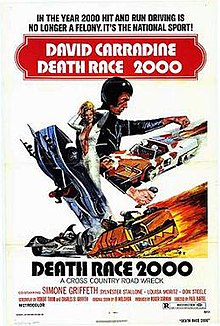
Roger William Corman is an American film director, producer, and actor. Known under various monikers such as "The Pope of Pop Cinema", "The Spiritual Godfather of the New Hollywood", and "The King of Cult", he is known as a trailblazer in the world of independent film. Many of Corman's films are low-budget cult films including some which are adapted from the tales of Edgar Allan Poe.
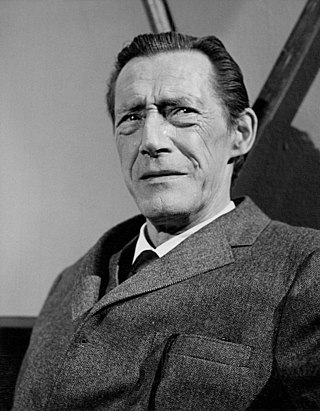
John Carradine was an American actor, considered one of the greatest character actors in American cinema. He was a member of Cecil B. DeMille's stock company and later John Ford's company, known for his roles in horror films, Westerns, and Shakespearean theater, most notably portraying Count Dracula in House of Frankenstein (1944), House of Dracula (1945), Billy the Kid Versus Dracula (1966), and Nocturna: Granddaughter of Dracula (1979). Among his other notable roles was “Preacher Casy” in John Ford’s The Grapes of Wrath. In later decades of his career, he starred mostly in low-budget B-movies. In total, he holds 351 film and television credits, making him one of the most prolific English-speaking film and television actors of all time.

David Carradine was an American actor, director, and producer, whose career included over 200 major and minor roles in film, television and on stage, spanning more than six decades. He was widely known to television audiences as the star of the 1970s television series Kung Fu, playing Kwai Chang Caine, a peace-loving Shaolin monk traveling through the American Old West.

The Cars That Ate Paris is a 1974 Australian horror comedy film, produced by twin brothers Hal and Jim McElroy and directed by Peter Weir. It was his first feature film, and was also based on an original story he had written. Shot mostly in the rural town of Sofala, New South Wales, the film is set in the fictional town of Paris in which most of the inhabitants appear to be directly, or indirectly, involved in profiting from the results of car accidents. The film is considered part of the Australian New Wave genre.

Boxcar Bertha is a 1972 American romantic crime drama film directed by Martin Scorsese and produced by Roger Corman, from a screenplay by Joyce H. Corrington and John William Corrington. Made on a low budget, the film is a loose adaptation of Sister of the Road, a pseudo-autobiographical account of the fictional character Bertha Thompson. It was Scorsese's second feature film.

Cannonball is a 1976 American comedy film directed by Paul Bartel and starring David Carradine. The film is one of two released in 1976 that were based on a real illegal cross-continent road race that took place for a number of years in the United States. The same topic later became the basis for the films The Cannonball Run, Cannonball Run II and Speed Zone. The film was written and directed by Paul Bartel, who also directed Death Race 2000.

Paul Bartel was an American actor, writer and director. He was perhaps most known for his 1982 hit black comedy Eating Raoul, which he co-wrote, starred in and directed.
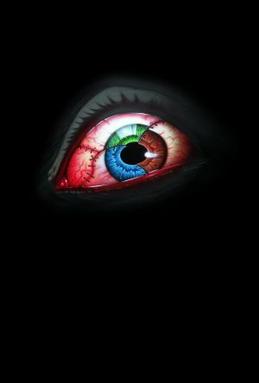
Frankenstein Unbound is a 1990 science fiction horror film based on Brian Aldiss' 1973 novel of the same name, starring John Hurt, Raul Julia, Bridget Fonda, Jason Patric, and Nick Brimble. The film is co-written and directed by Roger Corman, returning to the director's chair after a hiatus of almost twenty years. This is his final directorial effort to date, for which he was paid $1 million to direct.
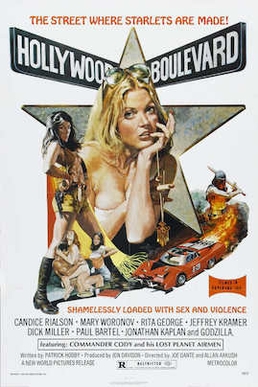
Hollywood Boulevard is a 1976 American satirical exploitation film directed by Allan Arkush and Joe Dante, and starring Candice Rialson, Paul Bartel, and Mary Woronov. It follows an aspiring actress who has just arrived in Los Angeles, only to be hired by a reckless B movie film studio where she bears witness to a series of gruesome and fatal on-set accidents. The film blends elements of the comedy, thriller, and slasher film genres.

Charles Byron Griffith was an American screenwriter, actor, and film director. He was the son of Donna Dameral, radio star of Myrt and Marge, along with Charles' grandmother, Myrtle Vail, and was best known for writing Roger Corman productions such as A Bucket of Blood (1959), The Little Shop of Horrors (1960), and Death Race 2000 (1975).
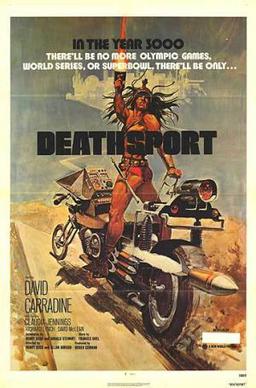
Deathsport is a 1978 science fiction B-film produced by Roger Corman and directed by Allan Arkush and Nicholas Niciphor. The film stars David Carradine and Playboy Playmate Claudia Jennings. It would be one of Jennings' last films before her death.

Death Race is a 2008 dystopian action thriller film written and directed by Paul W. S. Anderson. It stars Jason Statham, Tyrese Gibson, Ian McShane, and Joan Allen.
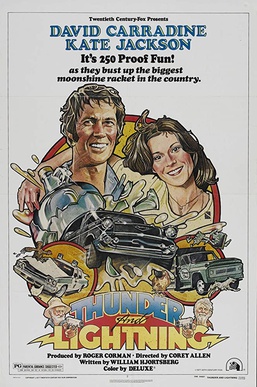
Thunder and Lightning is a 1977 action comedy film directed by Corey Allen, and starring David Carradine and Kate Jackson.
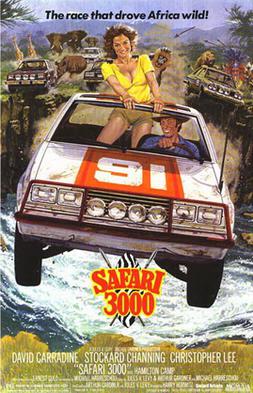
Safari 3000 is a 1982 American action-adventure comedy film directed by Harry Hurwitz and starring David Carradine, Stockard Channing, and Christopher Lee. The film was shot on location in Africa.
Steve Carver was an American film director, producer, and photographer.

Death Race 3: Inferno is a 2013 American science fiction action film directed by Roel Reiné. It is the third installment in the Death Race film series and takes place between the events of Death Race 2 (2010) and Death Race (2008). The film was released direct-to-video on January 22, 2013.
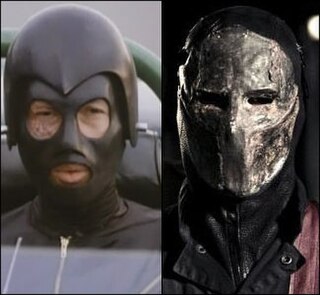
Frankenstein is a fictional character and the main protagonist of the Death Race franchise. Within the film universe, the character is an alias taken on by other characters who participate in the titular race. The character has been played by David Carradine, Jason Statham, Luke Goss, Dougray Scott, Manu Bennett, and Velislav Pavlov.

Eat My Dust! is a 1976 American action comedy film written and directed by Charles B. Griffith, and starring Ron Howard.
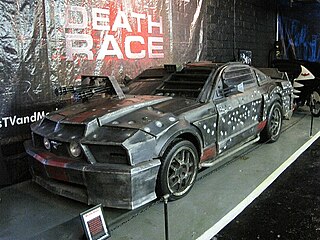
The Death Race series is a car combat franchise encompassing a series of films and other media centered on a reality show set in a prison, where inmates race against each other in order to win their freedom.

Death Race 2050 is a 2017 American political satire action direct-to-video film directed by G.J. Echternkamp, and starring Manu Bennett, Marci Miller and Malcolm McDowell. It is a sequel to the 1975 film Death Race 2000. Both films were produced by Roger Corman, who described the film as "a car-racing picture with some black humor."
